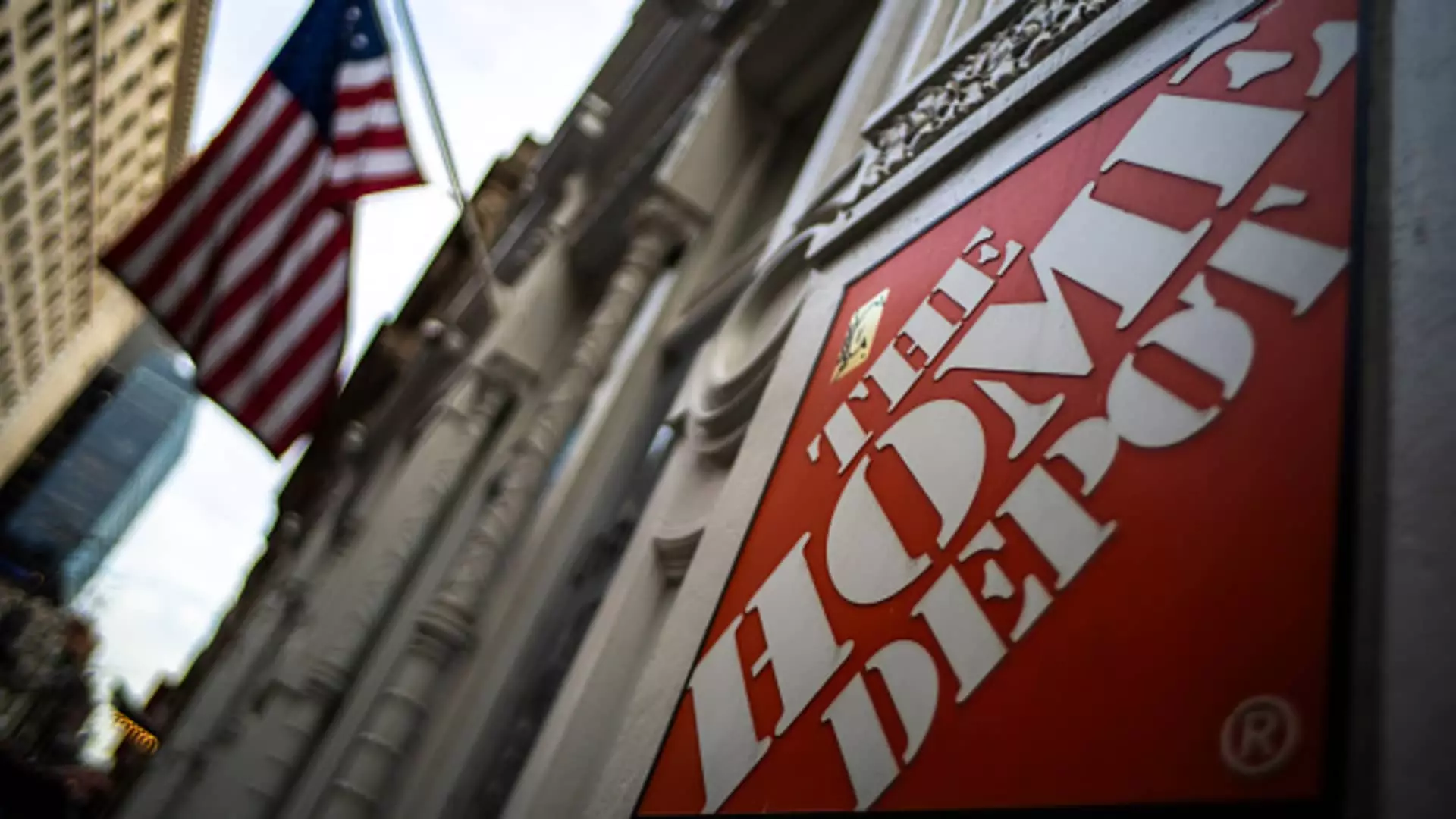Home Depot’s recent financial trajectory reveals a stark reality: even the most robust retail giants are not immune to the broader economic headwinds that threaten their stability. While executive optimism often masks underlying vulnerabilities, the truth is that the company’s growth narrative is increasingly fragile, battered by persistently high interest rates, a sluggish housing market, and ongoing tariff chaos. The recent earnings estimates—$4.71 per share on $45.36 billion in revenue—offer only a narrow snapshot of a company grappling with a complex and uncertain environment. This scenario underscores that, beneath the surface, Home Depot’s +2.8% annual sales growth projection and a mere 1% rise in comparable sales are modest, almost insignificant, when viewed against the broader economic challenges.
The retailer’s recent strategic moves to pivot away from traditional homeowner sales—shifting focus toward professional contractors and tradespeople—highlight a desperate attempt to find a sustainable path forward. Acquiring SRS Distribution and GMS signals a clear recognition that the future depends on serving the professional sector, which is arguably more resilient amid economic downturns. However, whether this shift will deliver meaningful growth remains to be seen. The core problem persists: consumers are reluctant to invest in large-scale projects that require borrowing, a fact CEO Ted Decker acknowledged with candor. The real estate market’s sluggishness, combined with sky-high borrowing costs, has quelled homeowners’ enthusiasm for remodeling, renovation, or expansion projects.
Tariffs and Global Supply Chains: The New Uncertainty
The international trade landscape further complicates Home Depot’s outlook. In recent months, tariff policies have been in flux, creating an environment of unpredictability. Although the company attempted to reassure investors by stating that it wouldn’t hike prices immediately, the broader retail sector faces mounting pressure. Walmart’s warnings about absorbing tariff costs illuminate the harsher reality for mass merchants: tariffs are forcing them to pass costs onto consumers, risking eroding price competitiveness and consumer loyalty.
Home Depot’s strategy to diversify its supply chain by sourcing from a wider array of countries is prudent, yet it remains a gamble. The goal to ensure that no single country outside of the U.S. accounts for more than 10% of purchases by 2026 is ambitious but not assured. It reflects an acknowledgment that reliance on Chinese manufacturing is increasingly untenable in this geopolitical climate. However, diversification is costly and complex, adding layers of operational risk and uncertainty that could stifle profits in the near term.
Can Home Depot Sustain Its Strategic Shift?
Home Depot’s efforts to reorient toward the professional market may serve as a lifeline, but is it enough to secure long-term resilience? While a focus on roofing, landscaping, and pool professionals offers a promising alternative revenue stream, it also exposes the company to new vulnerabilities. These sectors are not immune to economic downturns, and their performance heavily depends on infrastructure spending, public projects, and sustained consumer confidence—areas that are all under threat during uncertain times.
Furthermore, the company’s decision to maintain stable prices amid rising tariffs reflects a central tension: sacrificing margin for market share. This strategy may provide short-term relief, but it could prove damaging over the long run if costs continue to rise or if competitors choose to pass on tariff hikes to consumers. The risk is that Home Depot will become a price taker rather than a differentiated brand, compromised in its ability to maintain healthy profit margins.
In sum, Home Depot’s narrative is a compelling illustration of how even the most dominant players must navigate a precarious balance in an environment riddled with economic uncertainties and geopolitical upheaval. The company’s strategic pivot towards professionals and supply chain diversification might buy time, but they do not guarantee a golden future. In truth, Home Depot stands at a crossroads—either to adapt with agility and resolve or to stumble amid the mounting chaos around it.

